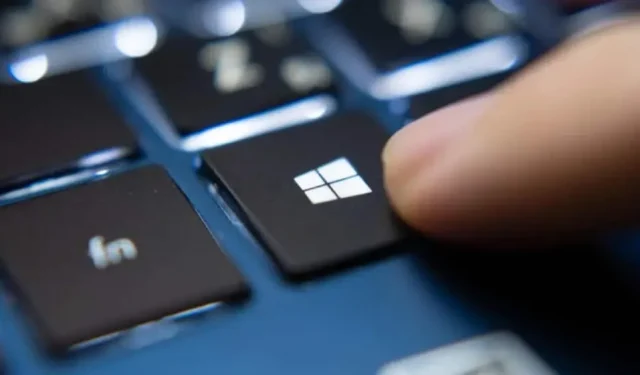Windows has a new weapon to protect your passwords

Windows has a new weapon to protect your passwords. In particular, smart warning functions to activate them yourself. Explanation.
Your PC password should not be shared lightly. It’s the key to your entire digital kingdom: work, social media, banking, your entire world is accessible from your Windows PC. Accordingly, Microsoft asks you not to reveal your password to anyone in the world, but the American giant is well aware that some will. That’s why the Redmond firm recently implemented a very powerful security feature.
How hackers steal your PC password
The main problem is phishing. This includes deceiving someone to voluntarily give up their information, including the password. The scammers can be very good at this little game. One strategy is to create a website that looks exactly like the one you are used to connecting to. Even if you realize it’s a scam and don’t click the login button, sometimes it’s enough to enter your password to get it stolen. And if your password is the same on several sites and on your machine, then now the hacker can invite himself to your device.
The storage of passwords itself can be another problem. If you store them in a Word or Excel file, for example, you are still vulnerable to data theft. You should only store your passwords in properly secured tools and never in a document that anyone can read.
If the personal risk is already very high, then for companies and networks it is even higher. Hackers infiltrate large institutions using weak or natural passwords. And sometimes access to the user’s machine is enough to destroy the entire security system of the organization.
How Microsoft Helps Protect Your Windows Password
In the Windows 11 2022 update, Microsoft is adding a new weapon to protect against password theft. The first is a warning that appears when you use your computer’s password on a website. This is to prevent you from using your PC password on any other service. If the site you connect to is fake, hackers will know your PC password, but even a legitimate site can be hacked. The second option warns you every time you enter a password in the software and it is not saved properly. Microsoft wants you to not store your passwords in apps like Word or Notepad because they don’t provide the level of protection of a password manager.
How to enable the new Microsoft password protection protocols
For some reason, these protections are not active by default and are also hidden in the Settings. To activate them, you must sign in to your computer with your Windows password, not your Windows Hello password. This will not work if you are using a PIN to sign in. If this is your case, you’ll need to disable this option first (in Start > Settings > Accounts > Sign-in options, select the Windows Hello method to disable and Uninstall).
Then open the Start menu > Settings > Privacy and security > Windows Security > Application and browser control > Reputation-based protection settings. Check Phishing Protection, this option must be enabled. Other important options are “Warn me about password reuse”and “Warn me about insecure password storage”. Activate both to receive notifications.
Leave a Reply